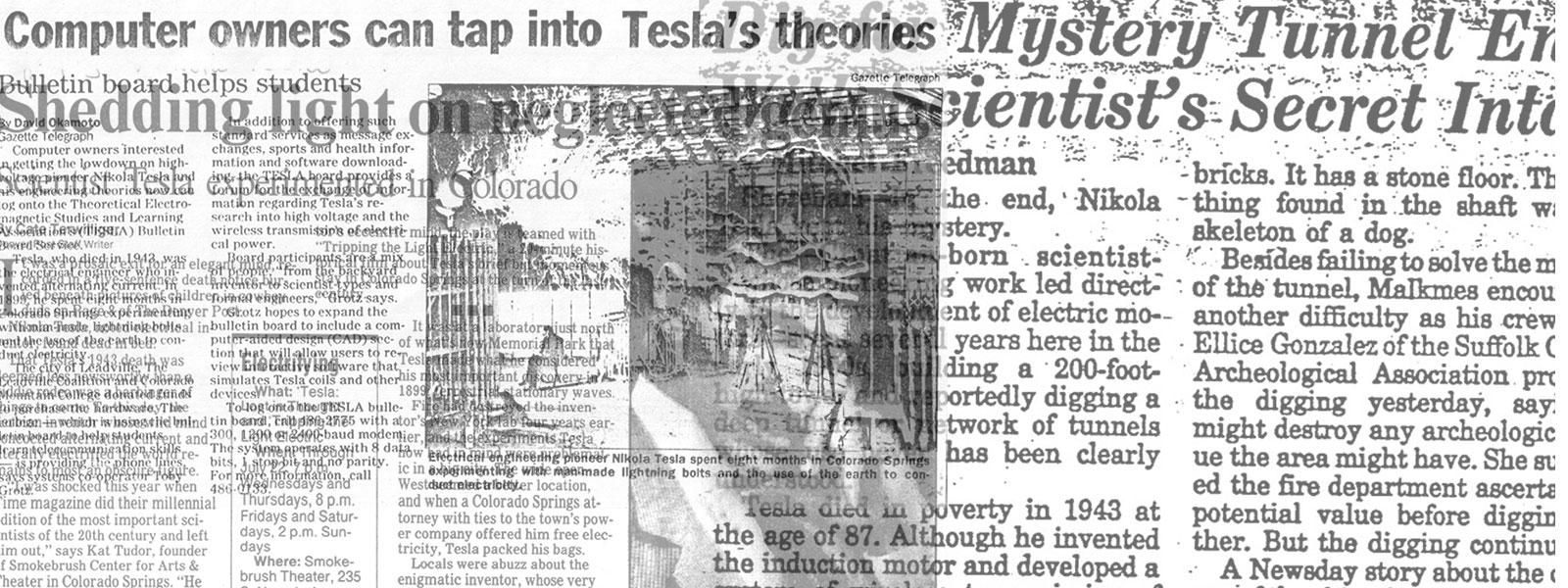
Nikola Tesla Articles
Letter on the Ferranti Effect
To the Editor:
For a number of years I have been accumulating materials and planning to undertake an article on “The ‘Ferranti Effect’ and the Ferranti Effect,” only to find one in the March 1995 issue (Isis, 1995. 86:30-51). I quickly fanned it to see if it was a technical discussion - a few equations greeted my eyes - but in reading it I was quite disappointed to find that the article did not distinguish between (1) what transmission-line engineers today (whether the lines of their respective technical discipline transmit currents at utility power frequencies or communication frequencies) refer to as the Ferranti effect on an unterminated, or open, λ/4-wavelength (quarter-wavelength) line resulting from standing-wave conditions and (2) the “effect” observed on the unterminated, six-mile Ferranti Deptford-to-London line. The term Ferranti effect is now universally applied to the former condition, and some confusion has resulted in taking the term Ferranti effect as it is applied to the observations by workers testing the Deptford-to-London line and contemporary references to effects on open λ/4-wavelength lines.
To review, a voltage rise occurs on any open λ/4-wavelength, uniform transmission line for which the value of α/ß is less than 4/π, where α is the attenuation constant and ß is the wavelength constant. With suitable driving-point voltages on such a line, dangerously high values can be reached at the open end. For the Ferranti Deptford-to-London line, this α/ß value (as calculated from the parameters given or known) is indeed substantially less than 4/π, but at the frequency of operation, 67 hertz, a λ/4-wavelength line would be 694 miles! The observed rise of 50 percent in voltage at the open end would not be attributable to standing-wave phenomena for a line less than 1 percent of the λ/4 wavelength. The “open” condition was also sufficiently met:
4,800 lamps @ 50 watts each = 2.4 kw
1,250-horsepower alternator = 933 kw
≅ 0.25 percent load.
Whereas the author of the paper makes it clear that he examines the contest between scientist-engineers and electrical engineers “who had not yet made AC theory and mathematics part of their skills” (p. 31), represented by their standard-bearers Fleming and Swinburne, respectively, and portrays Fleming as having successfully “tackled the technological world” (p. 49), it would be good to note that Fleming’s actions in the “Ferranti effect” controversy were most suspect to say the least. His controlled field experiment of connecting “two of Ferranti’s mains at London, thereby returning the current to Deptford” (p. 47), deceptively camouflaged the conditions inasmuch as the returned currents would be approximately the same whatever enhancement they received at the London end. Either Fleming understood this - and arranged the clever field experiment to subdue the quarreling parties - or he deceived himself in the merit of the experiment.
It was disappointing not to find in the footnotes references to Heaviside’s works and possibly the works of others in the United Stales, such as A. F. Kennelly, who made possible the ease of understanding of transmission line construction and operation. Some interesting and colorful history was also lacking in the paper. Ferranti was an ingenious engineer who anticipated breakdown failure in the buried cables and designed them with short-length connecting sections, thus minimizing replacement expense. A startling picture is presented by the line construction workers in boots, standing in mud, observing a test string of lamps growing brighter as cable sections were added.
Perhaps it was not an omission by the author but, rather, the terms of acceptance of the article for readers not to be afforded a technical discussion of Heaviside’s theory together with the more serviceable subsequent analyses that have made it the ready tool in construction of transmission lines today. Is it true that we must continue to moderate articles on the history of physical sciences by excluding mathematical analyses, possibly intimidating for some, in order that they will be completely understood by the general readership of the journals? If so, then the article should have more appropriately been submitted to an Institution of Electrical Engineers or an Institute of Electrical and Electronics Engineers publication where it could be more widely reviewed by specialists in the electrical engineering disciplines.